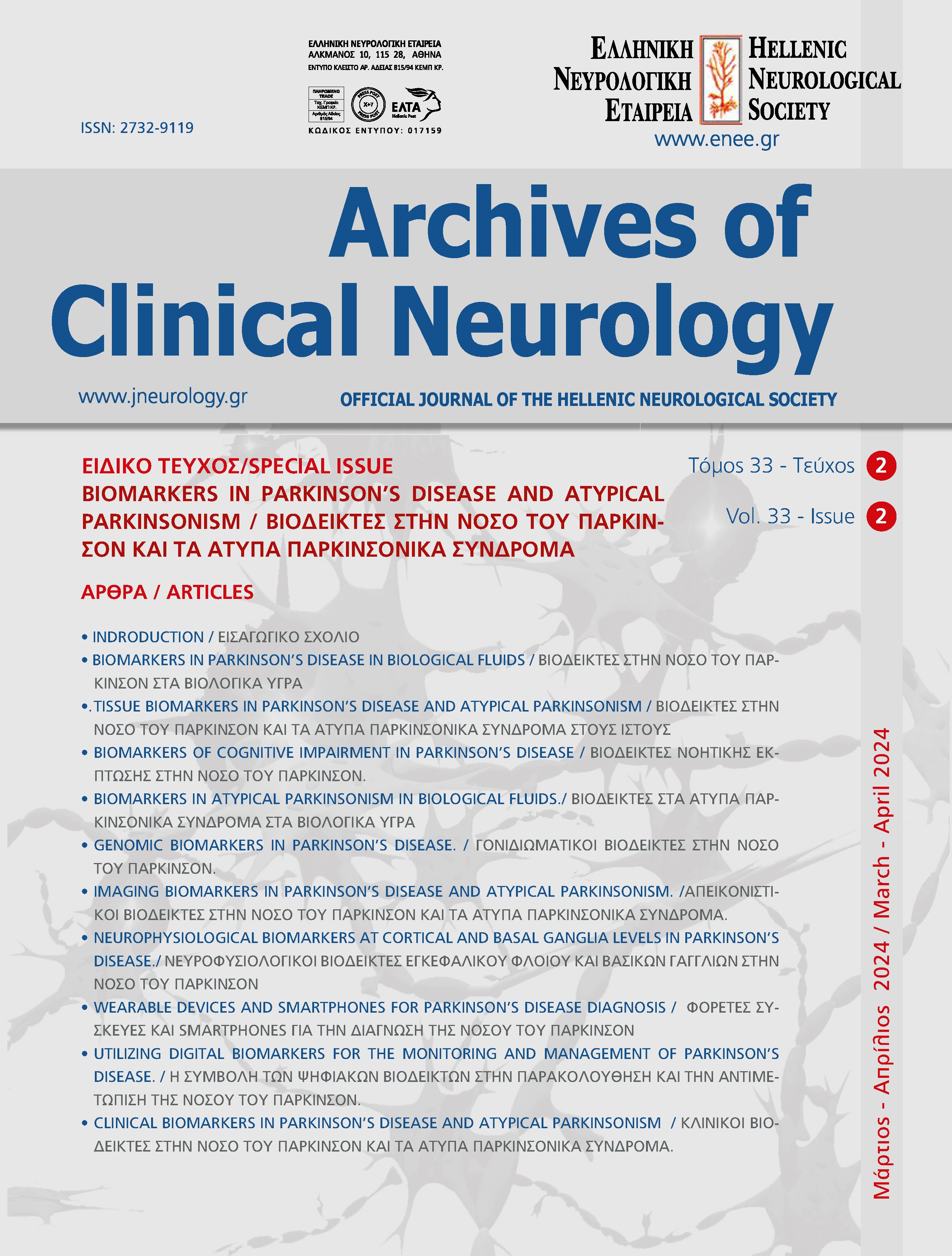TISSUE BIOMARKERS IN PARKINSON’S DISEASE AND ATYPICAL PARKINSONISM
Keywords:
peripheral tissue biopsies, synucleuinopathies, gastrointestinal tract, skin, olfactory mucosa/bulbAbstract
Phosphorylated a-synuclein (phosaSYN), the pathological signature of Parkinson’s disease (PD), is not
confined to the central nervous system, but have also been reported in peripheral tissues. However,
the usefulness of aSYN/phosaSYN detection in tissues accessible to biopsies as a reliable biomarker
for prodromal PD remains unclear. A systematic review of studies using biopsies of skin, olfactory and
gastrointestinal (GI) tissues was conducted to evaluate the sensitivity and specificity of both aSYN and
phosaSYN staining in PD and related disorders. In total 128 post-mortem and in vivo studies were reviewed.
Tissue was obtained from GI tract/salivary glands, skin and olfactory mucosa/bulb. We concluded that skin
biopsy is an easy, minimum invasive approach which provides high specificity and good sensitivity for the
detection and differential diagnosis of synucleinopathies. GI biopsies remain attractive in the detection of
synucleinopathies. However, a standardized methodology is essential to increase their diagnostic value.
The new promising assays could be incorporated in future cohorts, towards identifying the combinations
and relative contributions of the sensitivity amongst peripheral tissues


